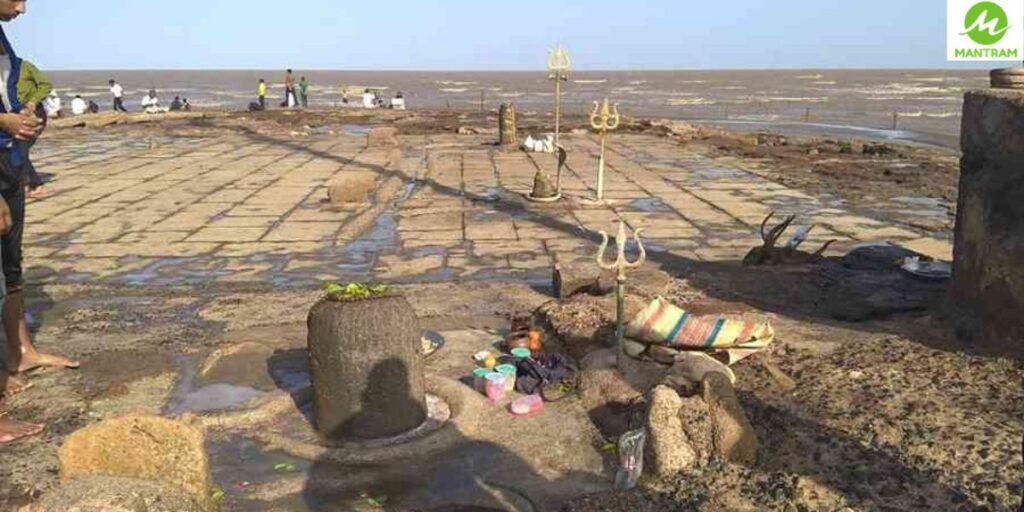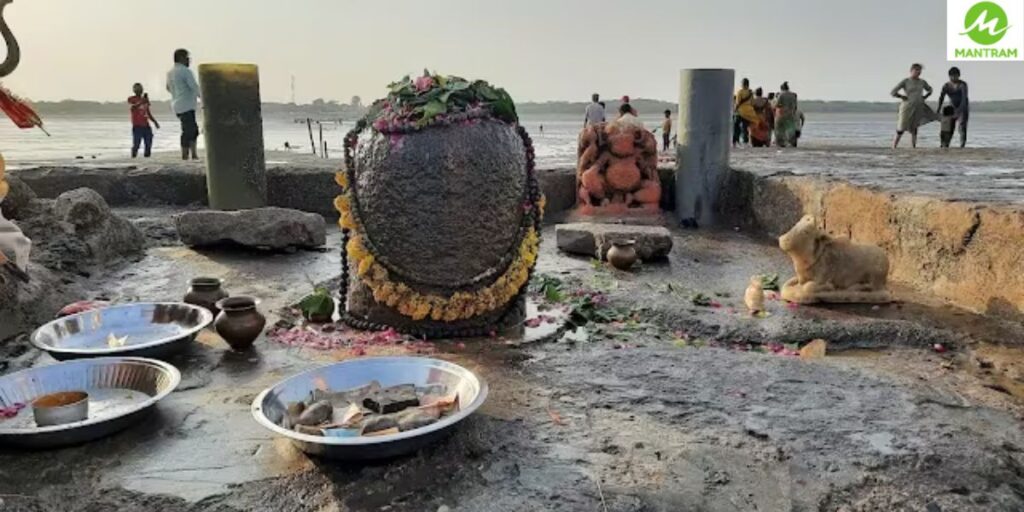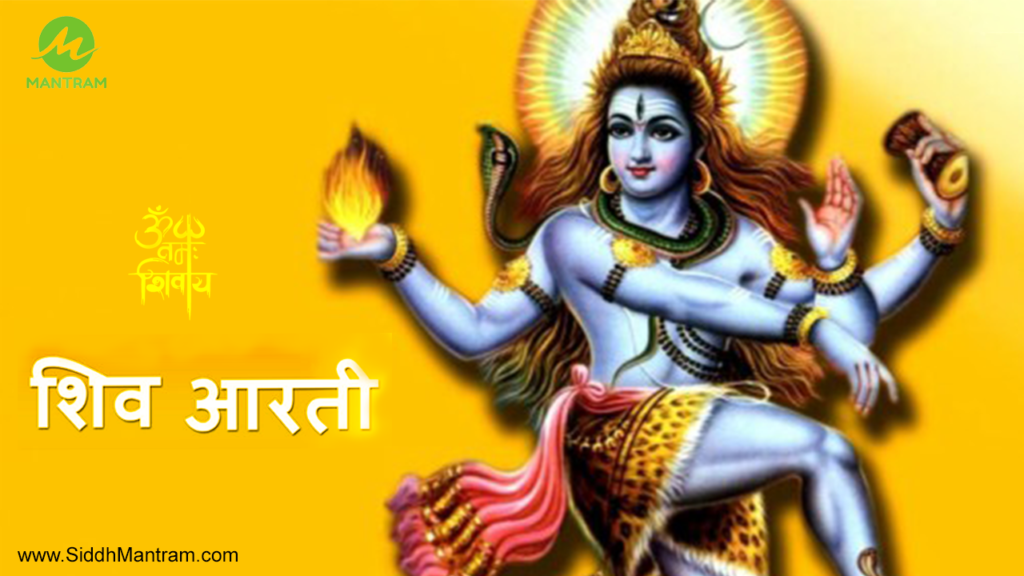The Nishkalank Mahadev Temple is a significant Hindu temple situated in Koliyak, near Bhavnagar, Gujarat. Dedicated to Lord Shiva, this temple holds a prominent place among devotees who come to offer their prayers with deep reverence.
The temple’s location is naturally serene and tranquil, situated along the coastal region of Gujarat.
The Koliyak area is known for its picturesque coastal landscape, and the temple itself is perched by the majestic shores of the sea.
Nishkalank Mahadev Temple Timings
The temple opens its doors at 6:00 AM for devotees and closes in the evening at 8:00 PM.
Regular rituals and Aarti ceremonies are conducted here, providing devotees with the opportunity to witness and participate in these spiritual practices with enthusiasm.
Nishkalank Mahadev Temple’s 5 Distinct Swayambhu Shiva Lingams :
Distinguished by the presence of five swayambhu Shiva lingams, each positioned on a square platform, with a Nandi statue facing each lingam. These unique features add to the temple’s significance and intrigue for devotees.
Swayambhu lingams are self-manifested lingams, which means they are not crafted by human hands but are believed to have naturally emerged. The presence of five such lingams within the temple complex highlights its sanctity and connection to Lord Shiva.
The layout of the temple showcases each swayambhu Shiva lingam placed on its own raised square platform. In front of each lingam stands a Nandi statue, the sacred bull that is considered the divine vehicle and devotee of Lord Shiva. The Nandi statues facing the Shiva lingams symbolize their role in bearing witness to the worship and devotion offered by the devotees.
Miracle and Mystry of Nishkalank Mahadev Temple


One of the most remarkable aspects of the Nishkalank Mahadev Temple is its interaction with the sea’s tides. During high tides, the temple becomes partially submerged in the sea, appearing as though it is concealed by the waters.
However, during low tides, the temple resurfaces and unveils itself in all its grandeur. This unique phenomenon adds an element of mystique to the temple’s aura and captures the imagination of those who visit.
The symbolism behind this natural occurrence is profound. The submergence during high tides represents the temporary concealment of one’s sins and impurities. As the temple emerges during low tides, it signifies the cleansing and purification of devotees’ souls, as if the sea itself washes away their wrongdoings and grants them a fresh spiritual start.
The cyclical rhythm of the tides mirrors the eternal cycle of birth, death, and rebirth, emphasizing the idea of renewal and transformation.
This natural phenomenon beautifully aligns with the concept of seeking forgiveness and redemption in the divine presence of Lord Shiva.
Also, the temple was built with a special technique which is unsolved mystery for modern engineers.
In essence, the Nishkalank Mahadev Temple’s five swayambhu Shiva lingams and their association with Nandi, along with the temple’s submersion and emergence with the sea’s tides, create a spiritual environment that speaks of purity, devotion, and the profound ability of the divine to cleanse and uplift the human spirit.
Nishkalank Mahadev Temple Story


The Nishkalank Mahadev Temple’s origin story is deeply intertwined with the aftermath of the Kurukshetra War, a pivotal event in the Mahabharata. The Pandavas, victorious yet weighed down by the moral dilemmas and burden of the war, sought reclamation for their sins. Their journey toward redemption led them to consult Lord Krishna, who provided them with a unique path to absolution.
Krishna handed the Pandavas a black flag and a black cow, instructing them to trail the cow while carrying the flag. He informed them that when both the cow and the flag turned white, it would signify their forgiveness. Additionally, Krishna advised them to seek Lord Shiva’s forgiveness through sincere apologies.
The Pandavas embarked on this symbolic journey, dutifully following the cow wherever it led them and watching the flag closely for any change in color. For years, they traveled to different places, yet the colors remained unchanged. This arduous quest demonstrated their unwavering commitment to seeking forgiveness and rectifying their wrongdoings.
Their journey eventually brought them to Koliyak Beach. It was at this sacred location that the miraculous transformation finally occurred—the cow and the flag turned white. Recognizing this divine sign, the Pandavas knew that their atonement was nearing completion.
Inspired by their dedication, the Pandavas then turned their focus to Lord Shiva. They meditated deeply, seeking his forgiveness and guidance. Impressed by their sincerity and devotion, Lord Shiva appeared before them in the form of a lingam, a symbol of his divine presence. To each brother, he manifested individually, acknowledging their penance and granting them forgiveness.
In light of this transformative experience, the Pandavas named the lingam “Nishkalank Mahadev,” which encapsulates the concept of being spotless, pure, and free from sin. The name symbolizes not only their own absolution but also serves as a testament to the potential of redemption for all who earnestly seek it.
In summary, the story behind the Nishkalank Mahadev Temple highlights the Pandavas’ ardent pursuit of forgiveness and redemption after the Kurukshetra War. Their journey, guided by Krishna’s counsel and marked by symbolic elements, led them to Koliyak Beach, where both the cow and the flag turned white. This transformative moment paved the way for their communion with Lord Shiva and the establishment of the temple, symbolizing their purification and restoration of innocence.
Famous Festival Bhadarvi:-
The renowned fair known as ‘Bhadarvi’ holds a significant place in the context of the Nishkalank Mahadev Temple in Gujarat.
This vibrant and culturally rich event takes place on the auspicious occasion of the new moon night during the month of Shravan, following the Indian calendar.
It serves as a momentous gathering that unites devotees and participants in a tapestry of spiritual and festive fervor.
At the heart of the temple festival lies a tradition of deep symbolic resonance—the ceremonial hoisting of a flag. This solemn act is carried out with great reverence by the Maharajas of Bhavnagar, who assumes the role of flag bearers for the occasion.
The flag, unfurled with grace and devotion, embodies not only the temple’s sanctity but also the collective faith and devotion of the community it serves.
What lends a distinctive character to this tradition is the duration for which the flag remains unfurled. Once hoisted, it remains proudly displayed for an uninterrupted span of 364 days, a continuous testament to the temple’s sacredness and the enduring devotion it inspires.
This extended period of flag display signifies the unwavering commitment of the custodians and devotees in upholding the spiritual sanctity of the Nishkalank Mahadev Temple.
The transition from one temple festival to the next is marked by a pivotal ritual—the changing of the flag. As the new moon night of Shravan approaches once more, the old flag is lowered with respect, making way for the raising of a new one.
This ritual embodies the cyclical nature of devotion and renewal, as well as the perpetual journey of faith and spiritual growth.
The ‘Bhadarvi’ fair, with its distinctive flag hoisting tradition and the subsequent changing of the flag, encapsulates the profound connection between the people, the temple, and their devotion to Lord Shiva.
It serves as a time of congregation, where devotees from diverse backgrounds converge to partake in the festivities, seek divine blessings, and immerse themselves in the sacred ambiance of the Nishkalank Mahadev Temple.
This annual celebration reinforces the temple’s role as a spiritual beacon, guiding the faithful on their paths of devotion and self-discovery.
The Right Time to Visit the Nishkalank Mahadev Temple:-
Can only visit the temple two times in 24 hours. And Timimg of aarti morning at 07:00 am and evening at 06:30pm.
Best time to Visit is From March to July
The pilgrimage to the Nishkalank Mahadev Temple holds a distinct ritualistic practice for devotees, involving a barefoot walk from the shore during the period of low tide.
This unique approach adds a touch of reverence and dedication to the journey, as devotees tread the sands in a humble and spiritually charged manner.
Upon reaching the temple premises, devotees participate in a purifying ritual. They cleanse their hands and feet in the holy waters of the Pandavas pond, situated within the temple complex. This act of purification serves as a symbolic preparation, both physically and spiritually, before approaching the temple’s sacred shrine.
The timing of the tides plays a pivotal role in this pilgrimage experience. The tides exhibit heightened activity, particularly during the phases of the new moon and full moon. Devotees eagerly anticipate these moments, as the tides’ behavior impacts their visit to the temple. During these significant lunar phases, devotees watch with anticipation for the tides to recede, allowing them the opportunity to undertake their pilgrimage unimpeded.
It’s essential for those intending to visit the Nishkalank Mahadev Temple to consider the schedule of high and low tides. After 07:00pm temple is covered with high tides. This tidal information dictates the feasibility and timing of the journey, as the temple’s accessibility and the pilgrims’ barefoot walk largely depend on the tides’ behavior. To ensure a seamless and spiritually enriching experience, it is recommended to consult the tide schedule before embarking on the pilgrimage.
In essence, the practice of walking barefooted from the shore, the ritualistic cleansing at the Pandavas pond, and the timing of the tides collectively create a profound and immersive journey for devotees visiting the Nishkalank Mahadev Temple. This pilgrimage not only signifies devotion but also underscores the deep spiritual connection between the physical world and the divine realm.
How to reach Nishkalank Mahadev Temple:-
By railway :- The bhavnagar railway station 22 kilometer away.
By road :- You can book a cabe or auto and by bus you can get from koliya village and bhavnagar city.
By Air :- Ahmedabad city 196 kilometer away.



